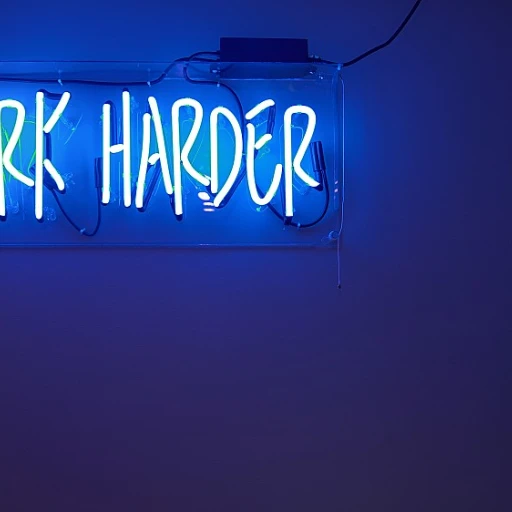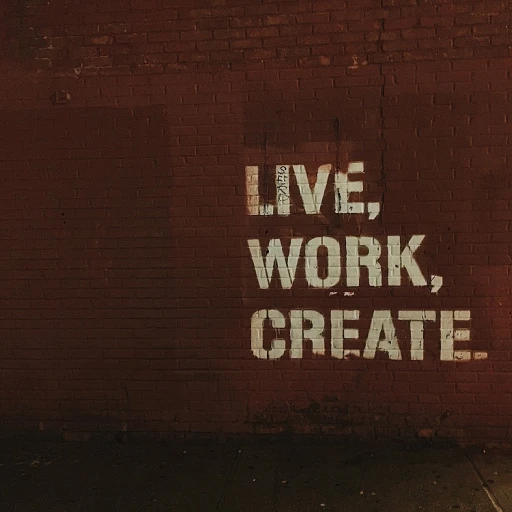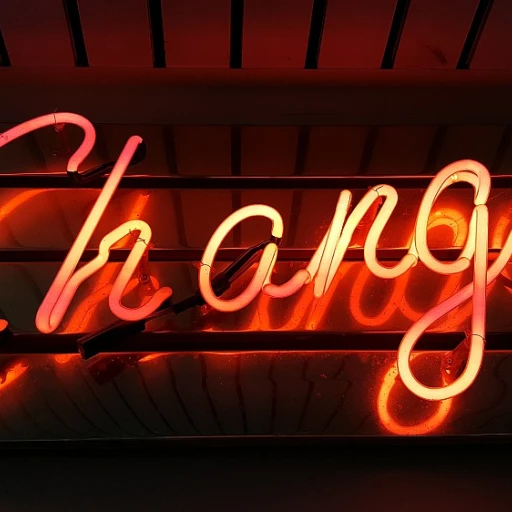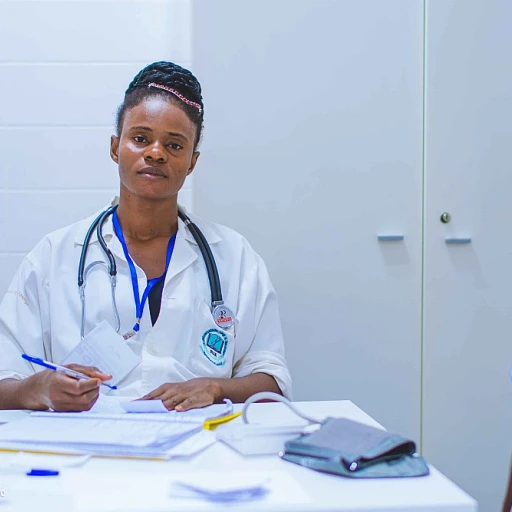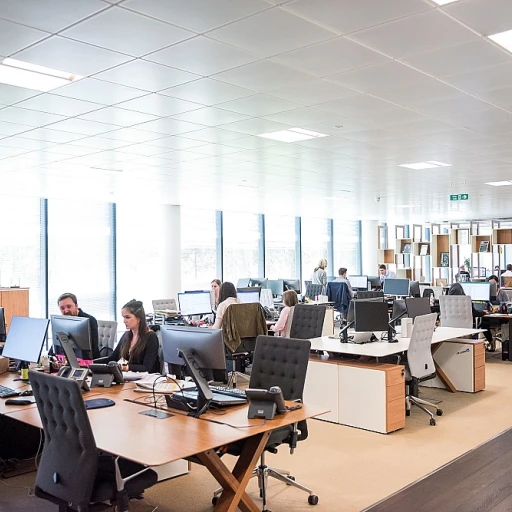-teaser.webp)
Understanding the Evolution of Talent and Intelligence
Recognizing the Evolution in Workforce Potential
Understanding the evolution of talent and intelligence is critical in workforce planning, as these elements shape the ability of individuals to grow and effectively contribute over time. With the labor market continuously evolving, organizations must remain agile and adapt their strategies for talent development. This growth mindset fosters an environment where both people and businesses can thrive through skill acquisition and continuous learning. Incorporating both traditional and cutting-edge methods to assess workforce intelligence, companies now focus on leveraging data and analytics. This approach helps in tracking talent development over time, offering insights into how talent management can be optimized for better quality hires. Many organizations find that embracing a culture of continuous learning is essential to meet the dynamic needs of the job market. As workforce dynamics shift, it's important for employers to differentiate between innate talent and skills that can be cultivated through hard work and learning. Instead of assuming talent is fixed, they recognize the potential for growth when a development talent approach is applied. This shift moves towards an emphasis on identifying talent who's adaptable and committed to growth over time. Transitioning from traditional talent acquisition strategies to those grounded in a growth mindset allows organizations to be more forward-thinking. By doing so, they create environments that encourage learning, adaptation, and innovation. For those interested in how workforce planning strategies can be applied mid-year, explore effective strategies to refine approaches and tackle challenges effectively.Strategies for Identifying Emerging Talent
Effective Approaches to Spotting Talent
Understanding how to identify and nurture talent in workforce planning is crucial for organizations looking to stay competitive in the evolving labor market. As the nature of work and skills requirements change, businesses must adopt innovative strategies to discover emerging talent. One effective method for recognizing potential is through a skills-based approach. This involves analyzing the specific abilities and aptitudes of individuals rather than merely focusing on their educational background or previous job titles. Utilizing data analytics can provide insights into these skills, helping organizations pinpoint the abilities they need to thrive over time. Moreover, adopting a growth mindset can be transformative in talent acquisition. By fostering an environment where hard work and continuous learning are valued, companies can encourage individuals to develop their potential fully. This shift from a fixed mindset to one that welcomes growth leads to better talent development outcomes, as people are motivated to learn and adapt within the workplace. It is also essential to engage with students and early-career professionals through internships and mentorship programs. These initiatives allow organizations to assess the intelligence and development of potential employees in real-world scenarios. Over time, such experiences can refine the abilities of these individuals, transforming them into quality hires. In addition, talent intelligence tools can be leveraged to track the progress of emerging talent. These tools gauge not only innate talent but also how well individuals adapt to new learning environments. By capturing this data, businesses can make more informed decisions about talent management and workforce planning. Ensuring that these strategies are in place prepares organizations to capitalize on development talent potential, shaping a workforce equipped to meet future challenges. For more information on the importance of integrating adverse action measures in workforce planning, refer to understanding the importance of an FCRA adverse action letter in workforce planning.The Role of Continuous Learning in Workforce Development
The Dynamic Nature of Learning in Workforce Development
In today's fast-paced business environment, a culture of continuous learning is a pivotal factor in nurturing talent and intelligence across the workforce. Companies need to prioritize the development of both innate talent and acquired skills, creating a synergy that propels individuals toward their full potential. This approach aligns closely with the strategic goals of effective talent management in today's labor market.
Organizations that emphasize continuous learning are better positioned to adapt to the changing dynamics of talent acquisition and talent intelligence. Such companies invest in employee development by offering opportunities for training and education, thereby fostering a growth mindset among their workforce. This not only enhances the abilities of their employees to perform their current jobs more effectively but also equips them with the skills necessary to tackle future challenges.
Moreover, continuous learning promotes a mindset where employees are encouraged to learn, adapt, and innovate over time, resulting in a more agile and resilient workforce. This contrasts sharply with a fixed mindset, where growth and intelligence are viewed as static. A growth mindset, supported by ongoing learning initiatives, enables businesses to retain talent by ensuring that their employees remain motivated and engaged.
In practice, businesses can utilize data-driven approaches to identify areas for improvement and track the progress of their workforce’s development. This process, which includes assessing the quality of hires and understanding skill gaps, is vital for sustaining a robust talent pipeline.
For further reading on integrating demand planning into workforce strategy, feel free to explore the exploration of demand planning software features.
Adapting Workforce Planning to Changing Talent Dynamics
Embracing Flexibility in Workforce Strategies
Organizations must continuously adapt their workforce planning strategies to stay aligned with the dynamic nature of talent dynamics. This includes recognizing the shifting landscape where both talent and intelligence are no longer seen as static entities, but as evolving aspects that can be nurtured over time. A key component of this adaptation involves fostering a culture of continuous learning. This shift encourages employees to move beyond a fixed mindset—viewing talent as innate and unchangeable—and embrace a growth mindset, which sees potential for development through hard work and learning. By cultivating this mindset, organizations can create an environment where individuals have the opportunity to grow their skills and abilities, consequently enhancing their value within the workforce. To address evolving talent dynamics, organizations can:- Implement skills-based workforce planning, assessing current and emerging skills required for future growth.
- Utilize data and analytics to identify the potential in individuals and predict future talent needs.
- Encourage job roles that support continuous learning, allowing employees to explore various aspects of their potential intelligence and skill set.
- Facilitate access to developmental resources, like company-sponsored courses or mentorship programs, that support intelligence and skill growth.
Challenges in Measuring Talent and Intelligence Growth
Overcoming Barriers in Measuring Talent and Intelligence Development
Understanding how talent and intelligence evolve within an organization is crucial for effective workforce planning. However, it's important to recognize that measuring this growth comes with its unique set of challenges. As organizations strive to optimize workforce planning through nurturing talent and intelligence over time, a few significant hurdles must be addressed. One of the main challenges arises from relying on traditional metrics that prioritize innate talent and fixed mindset approaches. These metrics often fail to capture a comprehensive view of an individual's growth mindset or their potential for talent development. A fixed mindset limits the ability to see employees’ potential beyond their current job roles. To accurately assess talent intelligence, incorporating data-driven strategies is essential. However, translating such data into actionable insights requires a deep understanding of how skills and learning evolve. Ensuring that these insights are relevant and timely is another challenge, as both the labor market and workforce needs are in constant flux. Moreover, talent acquisition and management processes often fall short in evaluating the ability learn or skills-based competencies over time. Organizations must develop mechanisms that reflect a culture continuous of learning and quality hire metrics rather than just static performance indicators. Another barrier comes from people's perception of intelligence talent, which is sometimes mistakenly deemed as purely innate and not subject to development. Shifting such perceptions to appreciate the role of hard work and time in shaping skills and abilities can be difficult but necessary for effective talent planning. Organizations should also be mindful of how they measure effective talent outcomes, emphasizing a blend of both qualitative and quantitative indicators that allow for a holistic view of growth. This may include understanding the growth potential by recognizing patterns over time in employee performance and engagement. Finally, as businesses and students alike adapt to changes in the job market, workforce planning must continually evolve to meet new challenges and opportunities. Organizations that can overcome these measurement challenges will be better positioned to harness their workforce’s evolving talents and intelligence, fostering sustainable growth and development.Future Trends in Talent and Intelligence Development
The Future of Talent and Intelligence in Workforce Planning
As we look to the future of workforce planning, it's crucial to recognize the shifting paradigms of talent and intelligence development. With the landscape of the labor market constantly evolving, businesses must proactively adapt their strategies to stay competitive. Maintaining a growth mindset is vital for both individuals and organizations. This mindset encourages the continuous learning culture necessary for personal and professional growth. People with a growth mindset understand that hard work and the ability to learn from experiences can lead to better job outcomes and personal development. Organizations increasingly rely on data-driven approaches to evaluate talent potential and track the growth of skills over time. This intelligence-driven perspective allows businesses to identify students and employees who demonstrate a high ability to learn and adapt to changing circumstances. As these data trends continue to evolve, so does the need for sophisticated analytics to measure and predict workforce needs efficiently. Here are some anticipated trends in talent and intelligence development, which organizations might consider:- Skills-Based Approach: Emphasizing a skills-based perspective rather than focusing solely on innate talent will be more prevalent. This approach allows for better talent acquisition and quality hire decisions.
- Emphasis on Continuous Learning: Businesses will make continuous learning a core component of their workforce planning strategies. Encouraging employees to learn and adapt boosts both individual and organizational potential.
- Leveraging Technology: The use of AI and machine learning in talent intelligence is expected to enhance the ability to predict future workforce trends and needs.
- Flexible Workforce Models: Adapting workforce planning strategies to accommodate dynamic labor market conditions is crucial. This includes flexible job roles and remote work options.


